The “Magicians Hats”. The incredible legacy of Bronze Age knowledge!
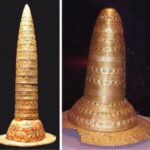
There are finds from our past that embarrass us, because they highlight a cultural advance that One of these was the discovery of four cone-shaped golden hats dating back to the Bronze Age.
Discovered in different places and times, the four golden hats have many similarities in terms of size, shape, design and construction. Their conical design mimics the well-known image of a witch's or wizard's hat, or rather we could say that it has, perhaps on a subconscious level, inspired the classic image of the wizard

Symbols are engraved on the hats that may have been used to make agricultural and / or astronomical predictions, possibly elevating the wearer to divine status.
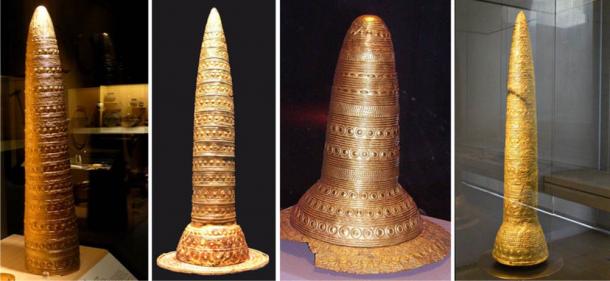
The four golden hats. Left to right: Vienne, France (1844); Southern Germany or Switzerland (1996); Schifferstadt, Germany (1835).
The four golden hats are rare archaeological finds dating back to the Bronze Age, which lasted from 3300 to 700 BC. All the hats seem to have been created around the middle of this period, between 1400 and 800 BC To give you an idea we are at the time of the Mycenaeans in Greece, that of Achilles and Menelaus and the Trojan War, while Rome was still to come. These four mysterious headdresses have been discovered separately, over the course of 160 years, in different locations, three of them in Germany and one in France, and nothing prevents others from being found in the future.
These cult objects are constructed of gold foil, with intricate astronomical designs and demonstrate superb craftsmanship. Although the four hats bear notable similarities, they are also quite unique in their specific characteristics.
The first hat was discovered in 1835 in Schifferstadt, Germany. It is called the Schifferstadt Golden Hat. The Schifferstadt Golden Hat was discovered by a farmer and appears to have been intentionally buried. It is the shortest of the four hats, with a height of 29.6 cm. It is divided into bands that run the full length of the hat, with each band decorated with one of several designs, including circles, discs, and eye-like shapes. The Schifferstadt Golden Hat is believed to have been made between 1400 and 1300 BC.
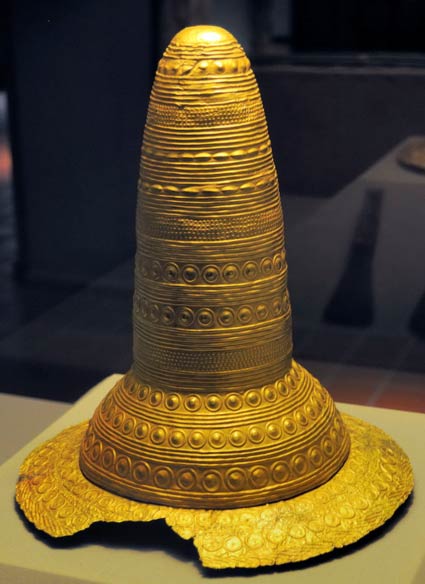
Schifferstadt's Golden Hat
The second hat uncovered is the Avanton Golden Cone, discovered in Avanton, France, in 1844. The Avanton hat is believed to have been created between 1000 and 900 BC and is the only one to lack the brim. but it seems, from signs of damage, that it has been removed The cone measures 55 cm. Avanton's hat also features bands, with repeated circular symbols.
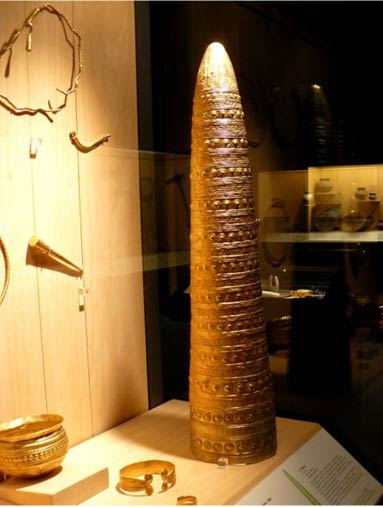
The third hat discovered is the Ezelsdorf-Buch Golden Cone, discovered near Ezelsdorf, Germany, in 1953. The Ezelsdorf-Buck Golden Cone is the tallest of the four hats, with a height of 88 cm , and contains the same banded design with repeated circles, discs and eye-like shapes. It is believed to have originated between 1000-900 BC.
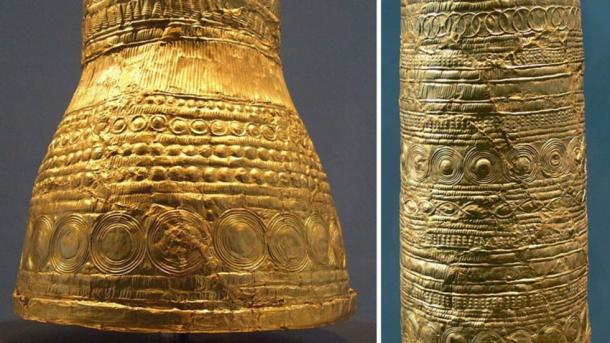
Close-up of the Ezelsdorf-Buch Gold Cone, showing the intricate designs carved into the gold foil
The provenance of the fourth gold hat is less clear, but it is believed to have been found in southern Germany or Switzerland – it was noted in the international art trade in 1995. The hat dates back to 1000-800 BC and is known as the Berlin Golden Hat because it was bought by the Berlin Museum. 75 cm high, it has the same band motif as the others.
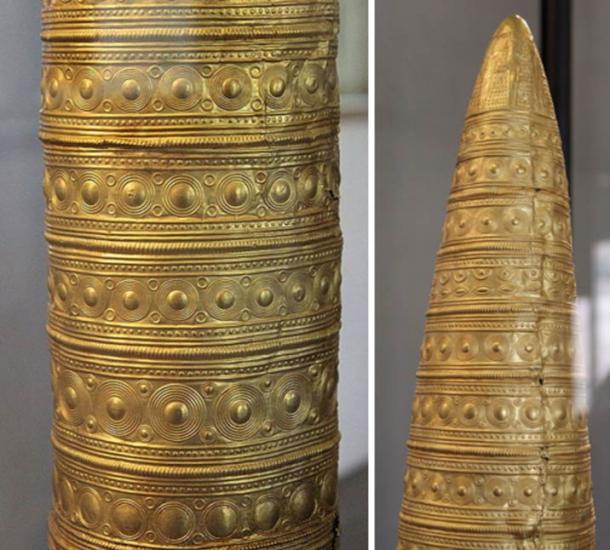
Detail of the golden hat of Berlin
The purpose of the gold hats is unknown, but there are some pretty clear assumptions today. Although they have been found in different areas, even very far from each other, the design is similar and suggests an equal use by a fairly uniform culture.
According to the most recent theories, astrological symbols were used to follow the stars and the sun, thus making it possible to make agricultural predictions, or when to plant and harvest. The figures who wore the hats were called "priest-kings". Because they were able to make predictions and were believed to have supernatural powers. While weather and weather forecasts are common today thanks to modern knowledge and technology, the ability to predict climatic conditions during the Bronze Age was seen as a divine power, but, in reality, these hats allowed, for those who he could read them, to actually predict the seasons and the motion of the stars, providing an almost supernatural power. For the people who foresees the movement of the stars is also in contact with those who move them.
Those who wore hats had the knowledge of the link between lunar and solar cycles. The knowledge this scheme provided would allow long-term predictions of solar and lunar cycles to be made. Overall, this shows that the inhabitants of Europe during the Bronze Age were much more sophisticated than initially thought.
So these hats were extraordinary tools of knowledge, unique, reserved for an elite of highly educated lords of the time with knowledge now unthinkable and lost in subsequent eras. Furthermore, these ancient King-Priests had another characteristic that should not be underestimated: with these hats they enjoyed an undoubted sense of spectacle!

Thanks to our Telegram channel you can stay updated on the publication of new articles of Economic Scenarios.
The article "Magicians Hats". The incredible legacy of Bronze Age knowledge! comes from ScenariEconomici.it .
This is a machine translation of a post published on Scenari Economici at the URL https://scenarieconomici.it/cappelli-dei-maghi/ on Wed, 17 Aug 2022 20:47:16 +0000.
